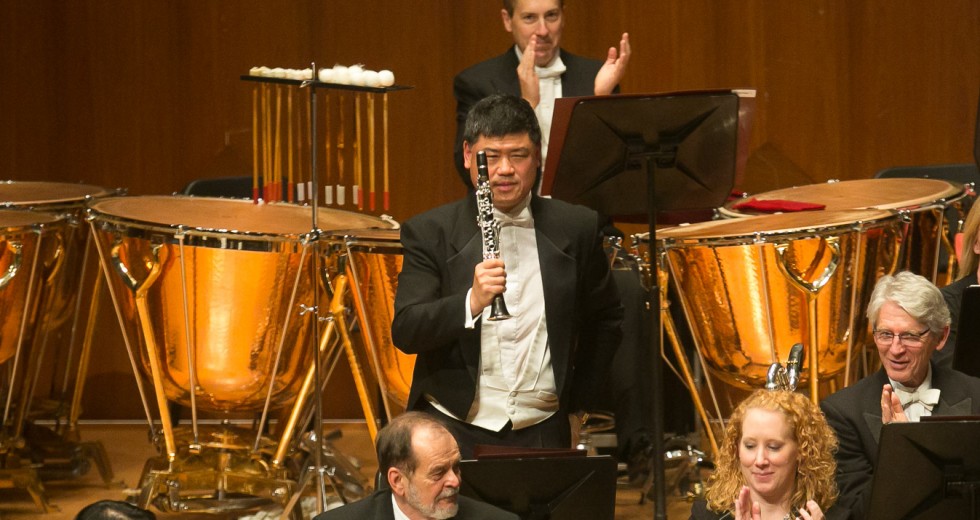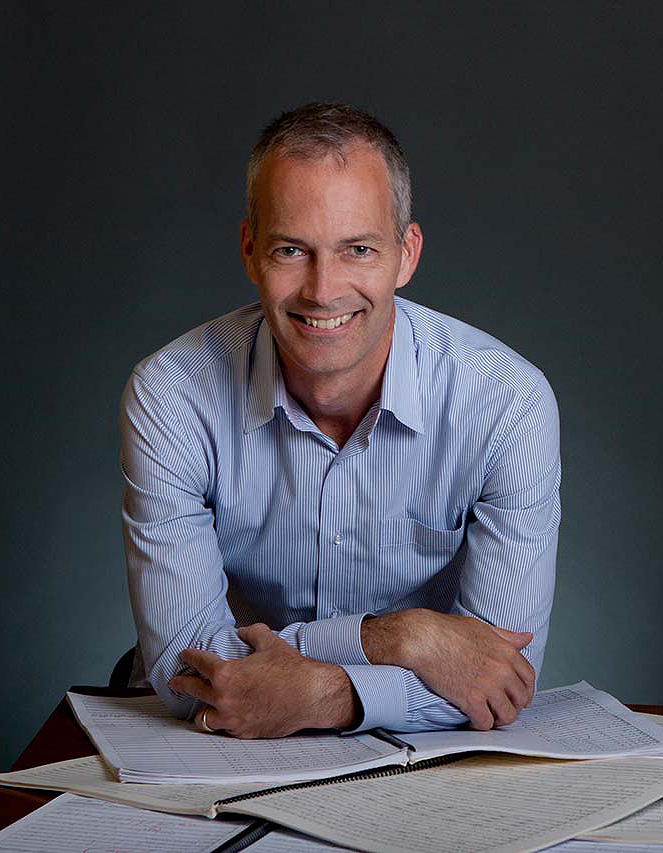
A few years ago, John Bruce Yeh discovered the music of James Stephenson and became so enamored with it that he went on to record a full album of the composer’s works spotlighting the instrument. The disc, titled “Liquid Melancholy: Clarinet Music of James M. Stephenson,” and recently released on the Chicago-based Çedille label, features six orchestral and chamber works, including four recorded for the first time.
“Jim is very imaginative when it comes what sort of music he thinks people would like to play and like to listen to,” said Yeh, assistant principal clarinet of the Chicago Symphony Orchestra since 1979 (he joined the ensemble two years earlier). “He’s really got it down. I’m very pleased to be playing his music. It’s challenging, to be sure, for the performers, but it’s very satisfying to perform. I’m a huge fan.”
Next season, CSO audiences will hear Stephenson’s music when the orchestra presents the world premiere June 13-15, 2019, of a concerto that the composer is writing for CSO bass trombone Charles Vernon. The new work is underwritten by the Edward F. Schmidt Family Commissioning Fund. (Stephenson’s Pillars, a concerto for low brass, just received its world premiere June 14-16 from the Minnesota Orchestra.)

James Stephenson, a trumpet with the Naples (Fla.) Philharmonic, switched to composing full time in 2007.
A native of Lockport, Ill., Stephenson started playing the trumpet as child. After earning a degree from the New England Conservatory of Music in Boston, he joined the Naples (Fla.) Philharmonic. But composition, which had been a sidelight, increasingly captured his attention, and after 17 years in the orchestra, he decided to devote himself full time to the pursuit in 2007. At the same time, he moved to Chicago with his family, returning to his Midwestern roots.
Although he has an obvious affinity for the trumpet and other members of the brass family, Stephenson has created works for a broad range of other instruments as well. “He writes skillfully for all instruments, and he knows their capabilities and knows their limitations, and he is willing to get to the edge of the envelope in pushing the limitations,” Yeh said. “There are challenges in the pieces he has written for me. They are not insurmountable, but they require some work to make them successful.”
That is particularly true for the Sonata for Clarinet and Piano (2015), which has what Yeh described as some awkward passages. “But musically, it makes a lot of sense,” he said. “It’s definitely advanced in terms of technical demands, but at the same time, it’s very rewarding in terms of musical satisfaction. It’s a good combination.” The idea for piece emerged out of discussions between Yeh and Stephenson, who together managed to persuade 25 other clarinetists to support its commission.
From the nearly three decades he spent in orchestras, Stephenson learned a great deal about the capabilities of multiple instruments. “When I started composing in my early 20s, I really started paying attention to what they were all doing, not only that but also what they enjoyed playing and what they didn’t enjoy playing,” he said. At the same time, he does additional research by talking directly to musicians or by investigating online.
Stephenson often struggles to characterize his down-to-earth, tonal musical language. The composer describes himself as a “creature of tradition” at least to some degree, and he is careful to provide entrées into his music through his choice of musical forms or use of repetition. “But within that,” he said, “I’m always searching for new sounds, new pairings of instruments and new rhythms and textures, so my music still has a freshness to it that is maybe new and familiar at the same time.”
Opening the album is Liquid Melancholy, a concerto for clarinet and orchestra (the name comes from a phrase in the novel Fahrenheit 451). The 18-minute piece was commissioned in 2011 by three youth orchestras, including the Midwest Young Artists Conservatory’s Symphony Orchestra in Highwood, Ill. (Yeh served as soloist for the ensemble’s regional premiere.) The engaging, easily digestible piece skillfully showcases the many facets of the clarinet. Its title seems particularly appropriate to the longest of the four sections, the slow, atmospheric second movement, with its sustained line for the clarinet set against a backdrop of quivering strings. The concerto serves as the recording debut of the Lake Forest Symphony, with its music director, Vladimir Kulenovic, as conductor.
Also on the album are two works that Yeh performs with the Chicago Pro Musica, a chamber ensemble he founded in 1979 with fellow CSO members, and two more pieces for piano and clarinet.
Although Stephenson’s music has been featured on several albums with pieces by other composers, only a few releases have been devoted exclusively to his music. “It’s certainly a big deal, because John is a hugely successful and well-known clarinetist,” he said. “So having him represent nothing but my music on a CD is fantastic.”
Along with his CSO responsibilities, Yeh relishes the chance to take on projects of his own and collaborate with other musicians, as he does on Liquid Melancholy. “It creates a balanced diet for my musical activities,” he said.
TOP: John Bruce Yeh, assistant principal clarinet, takes a bow during a CSO tour performance in February. | ©Todd Rosenberg Photography 2018